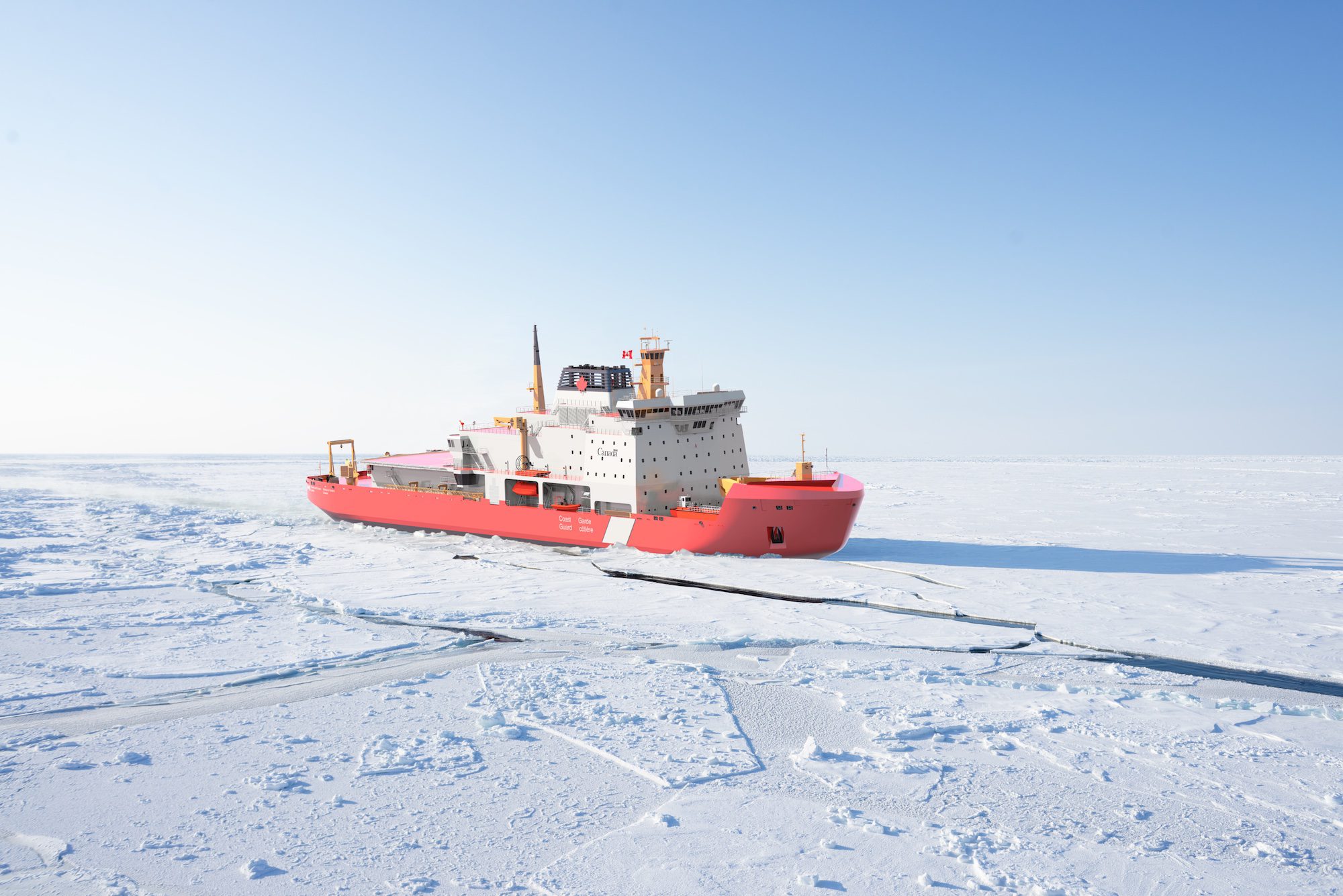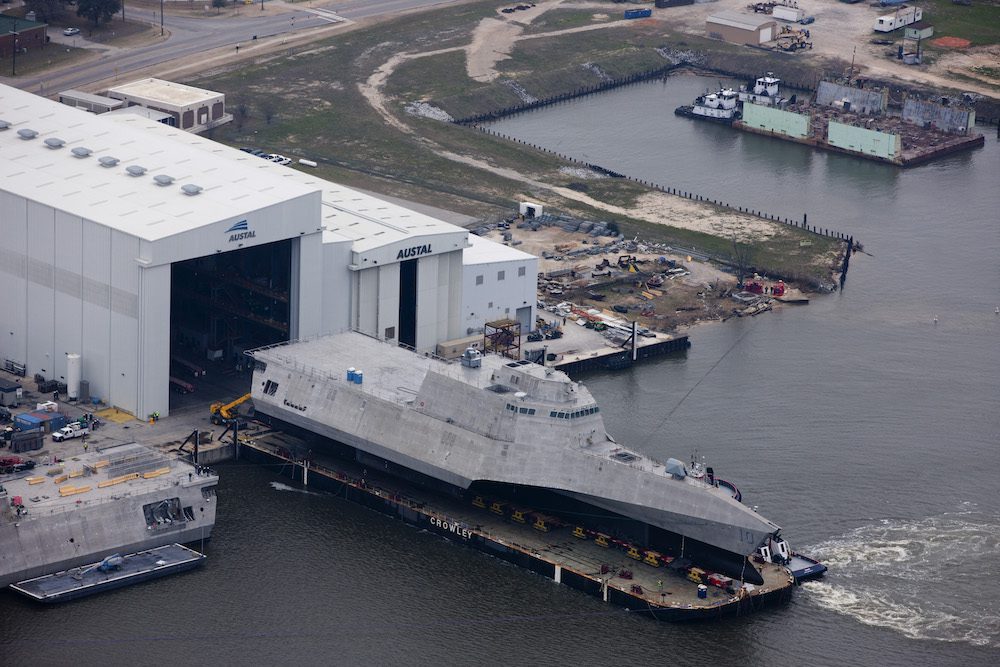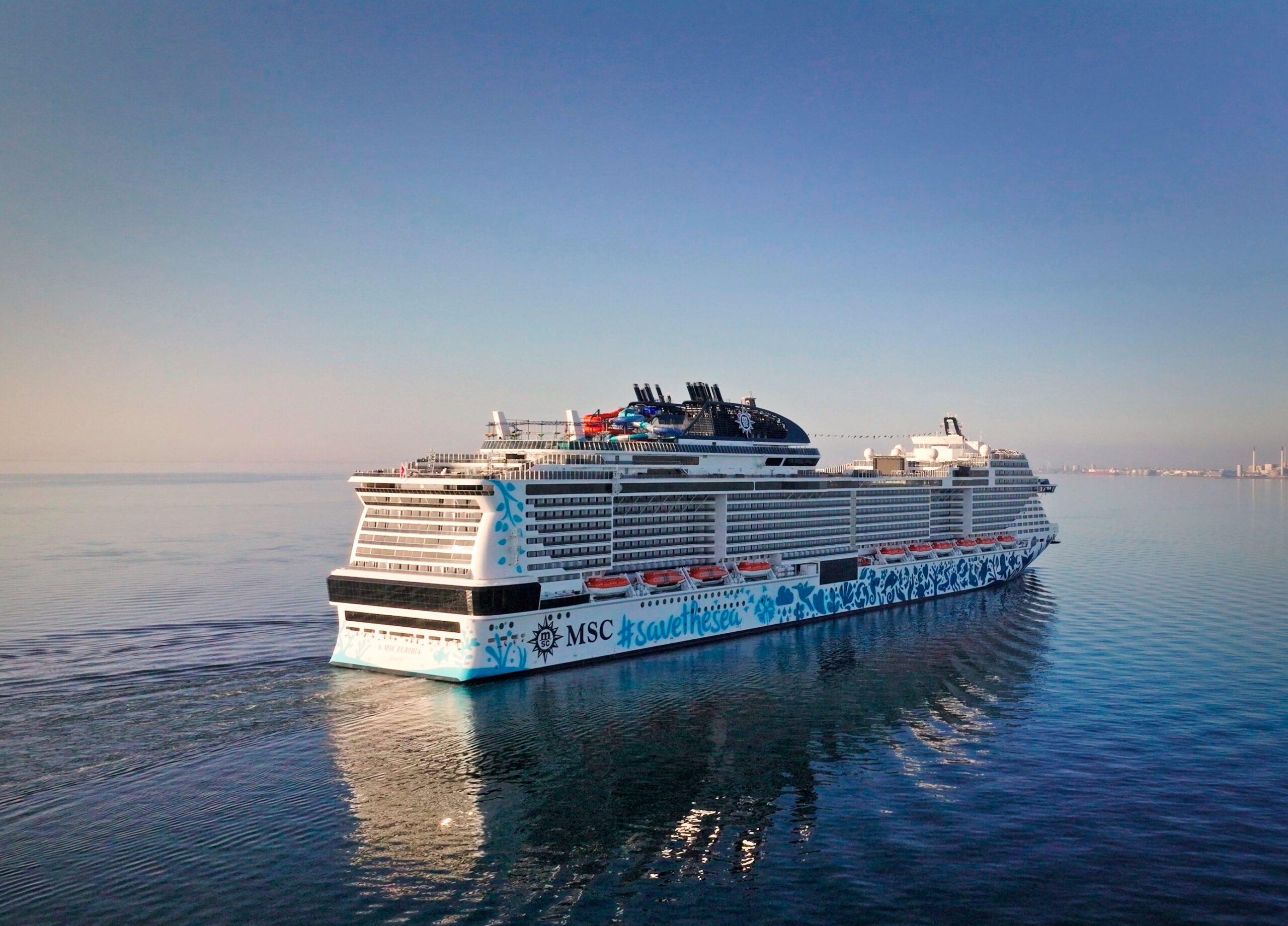Seaspan Shipyards began construction today on what will become the most capable vessel in the Canadian Coast Guard’s fleet – a new heavy polar icebreaker, marking the country’s first such construction in more than 60 years.
The cutting-edge vessel, measuring 158 meters in length and 28 meters in width, is designed to operate year-round in the high Arctic, supporting Canada’s presence across more than 162,000 kilometers of Arctic coastline. As one of the few Polar Class 2 vessels globally, it will enable operations farther north, in more challenging ice conditions, and for extended periods compared to any current Canadian icebreaker.
The vessel’s capabilities extend beyond ice navigation, encompassing high-Arctic scientific research, climate change studies, support for Indigenous communities, and maritime emergency response. With accommodation for up to 100 personnel, the ship will feature advanced systems including scientific laboratories, a moon pool for equipment deployment, helicopter facilities, and capabilities for future remotely piloted aircraft systems.
“The National Shipbuilding Strategy is showing that a made-in-Canada approach is not only possible, it is imperative to Canada’s security and sovereignty,” said John McCarthy, CEO of Seaspan Shipyards.
The construction commencement follows Seaspan’s successful completion of a polar prototype block in January 2024, which validated the shipyard’s ability to work with the specialized steel required for polar vessels – material that is twice as thick in some areas and less malleable than conventional shipbuilding steel.
This project represents the seventh vessel designed and built by Seaspan under Canada’s National Shipbuilding Strategy (NSS), and will be their fifth Polar Class vessel for the Canadian Coast Guard. The shipyard is currently contracted to construct up to 21 icebreaking vessels in total.
The timing of this construction start is particularly significant, coinciding with increasing Arctic activity and international competition. The project is part of Canada’s broader response to growing cooperation between Russia and China in the Arctic, where Moscow is expanding oil and gas deliveries to China while Beijing explores alternative shipping routes.
The vessel’s construction also aligns with the ICE Pact, a 2024 trilateral agreement between the United States, Canada, and Finland focused on developing Arctic and polar icebreakers. This collaboration comes as Arctic regions become increasingly accessible due to climate change.
Notably, this isn’t Canada’s only investment in its polar icebreaking fleet. Quebec-based Davie Shipbuilding also recently secured a separate CAD $3.25 billion contract for another polar icebreaker, dubbed the Polar Max, with delivery expected by 2030. This project will leverage expertise from Helsinki Shipyard, known for building over half of the world’s icebreakers.
These developments gain additional strategic importance as the U.S. Coast Guard faces delays in its own icebreaker fleet replacement program, with their first Polar Security Cutter not expected before 2030.

 Join The Club
Join The Club











